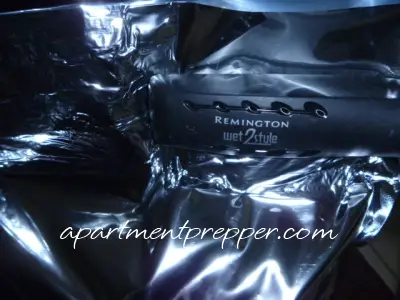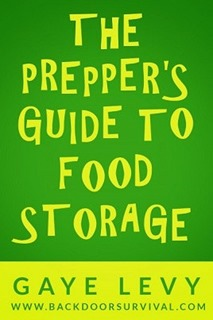Because salt is one of those essential ingredients with multiple uses, I make sure I a good amount stored away. I recently opened some of my stores that were packaged back in 2010 and the salt was as fresh as the day I bought it. Now I need to replenish my stored supply so I bought a huge bag of salt at Costco.
It will keep well in the pantry for a while, but, over time, the salt will clump up and become more difficult to use. It tends to get very humid where I live and given enough time, moisture gets into everything. You can always break it up if it were to clump up, but it’s so much easier to use salt when it is free-flowing. I’ve posted about bulk food storage a couple of years ago, but this time, I am doing it a bit differently.
Repackage Salt for Long-Term Storage
Materials I used:
Mylar bags (one-gallon size)
measuring cup or scoop
hair straightening iron
Steps:
- Wash and dry hands thoroughly. You don’t want any moisture around when doing this. It’s best to do this away from kids or pets, to avoid accidents with the hot straightening iron.
- Scoop salt into the mylar bag with a cup or scooper until it is about 1/2 – 3/4 full.
- Gently shake the bag to make sure the salt is evenly distributed throughout the bag.
- Squeeze all the air out by placing hands on each side. Now you are ready to seal.

- Use the straightening iron, set on the high setting, and start sealing one side to the top of the bag. When I did this process a couple of years ago I used a clothes iron. But ever since I read the tip from Gaye Levy I wanted to try using the hair straightening iron. I found that it is so much easier this way.
- Do the same thing on the other side. DO NOT TOUCH the Mylar bag after you’ve run the iron across it – bag will be hot!
- You do not need oxygen absorbers for salt or sugar. But if you are storing flour, rice or some other bulk food, you will need them.
- Label the bag with the item name and date. This way you’ll know what bag to use first when you rotate your food storage.
- Store the bags in a 5-gallon bucket with a lid. Store in a cool, dry place, with temperatures around 72 degrees or lower.
Another way to repackage food for storing long term is to use a vacuum sealer such as the Food-Saver.
How long will it last?
Properly stored bulk foods should last 10-30 years, however, other factors such as light, heat, and humidity may affect the stored food. If the food is stored at higher temperatures, the shelf life would be shorter. Storing food in less than ideal conditions may be a bit of a challenge but don’t let that stop you.
Always rotate your food storage
To avoid food going to waste, periodically go through your food storage and rotate your stores. Use up the foods with the oldest dates, and replace with a fresh batch.
About the author:
Bernie Carr is the founder of Apartment Prepper. She has written several books including the best-selling Prepper’s Pocket Guide, Jake and Miller’s Big Adventure, The Penny-Pinching Prepper and How to Prepare for Most Emergencies on a $50 a Month Budget. Her work appears in sites such as the Allstate Blog and Clark.com, as well as print magazines such as Backwoods Survival Guide and Prepper Survival Guide. She has been featured in national publications such as Fox Business and Popular Mechanics. Learn more about Bernie here.
Updated from a previous post that was originally published on Feb 5, 2014
You’ll find lots of great food storage tips from Gaye Levy’s e-book, The Prepper’s Guide to Food Storage, which I reviewed here 



I have seen salt stored with some white rice in it to absorb the moisture. Do you store sea salt or iodized salt?
Hi Ben, I do not add white rice for storage as the rice would be difficult to sift out when you just want to measure the salt while cooking, brining etc. but not have to use a salt shaker. I do use white rice to keep the salt free-flowing once I add it to the salt shaker. I have both sea salt and iodized salt stored separately.
I have had salt stored in buckets since 2008–no additives and it’s fine.
So salt has been here for billions of years and now, once packaged, won’t be any good after 30 years. Got it. 🙂
The real key to storing salt is a container that won’t breakdown from the salt. And the author is right, at least in my experience: Mylar bags. I have hundreds of pounds stored that way and what I use each day comes from 12 year old packs (2008). The containers are fine and still holding up to the salt. The salt, of course, is perfect.
Hi Dale, Thanks for sharing this has worked for you! Appreciate the comment.